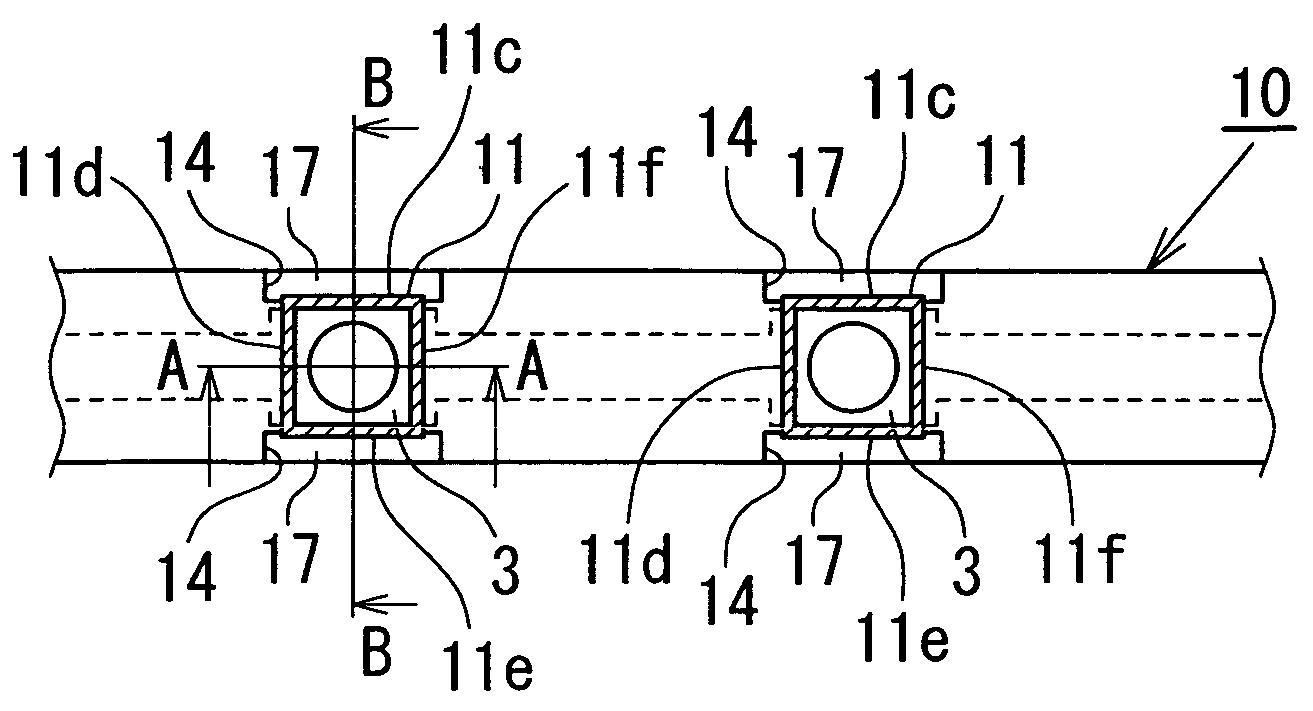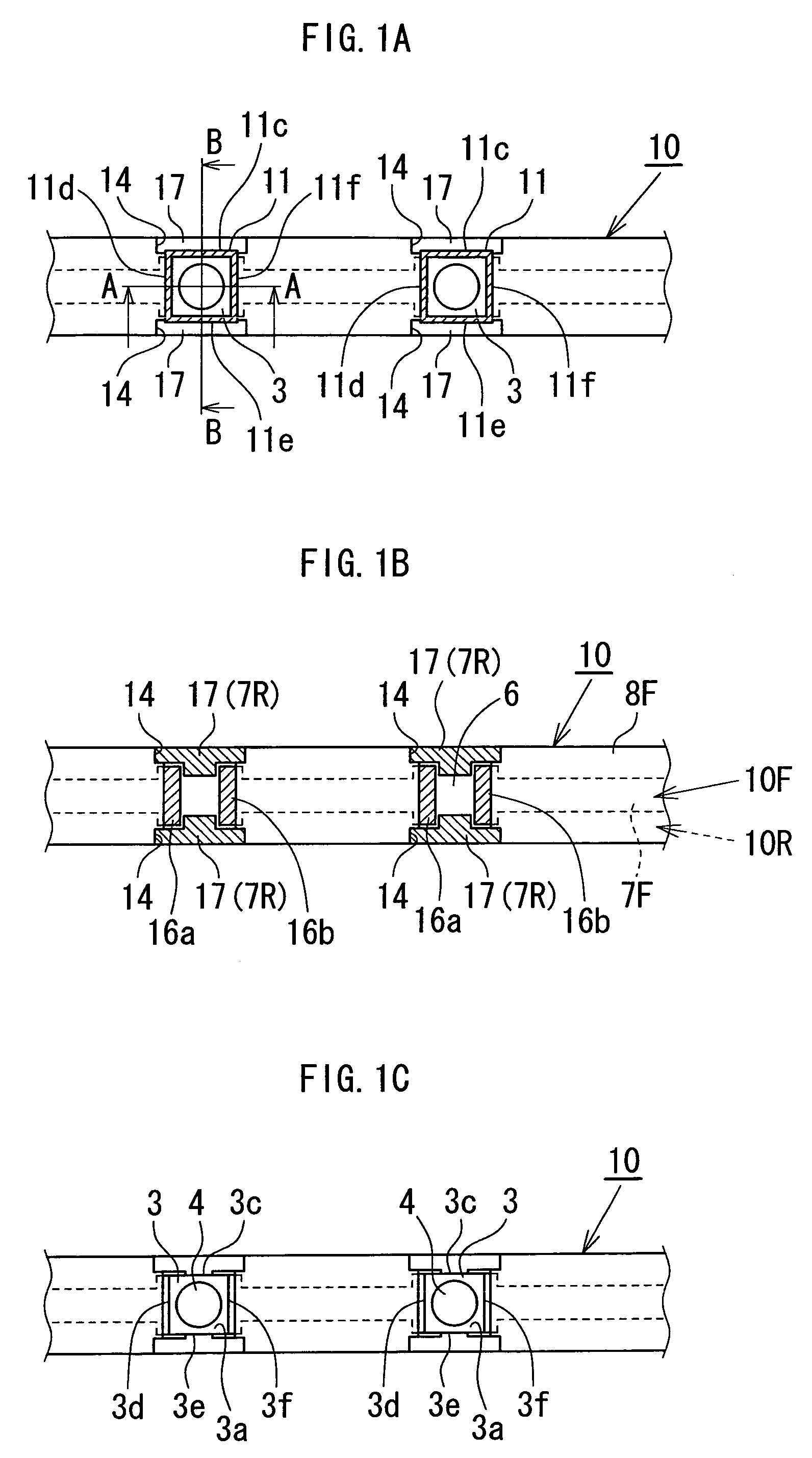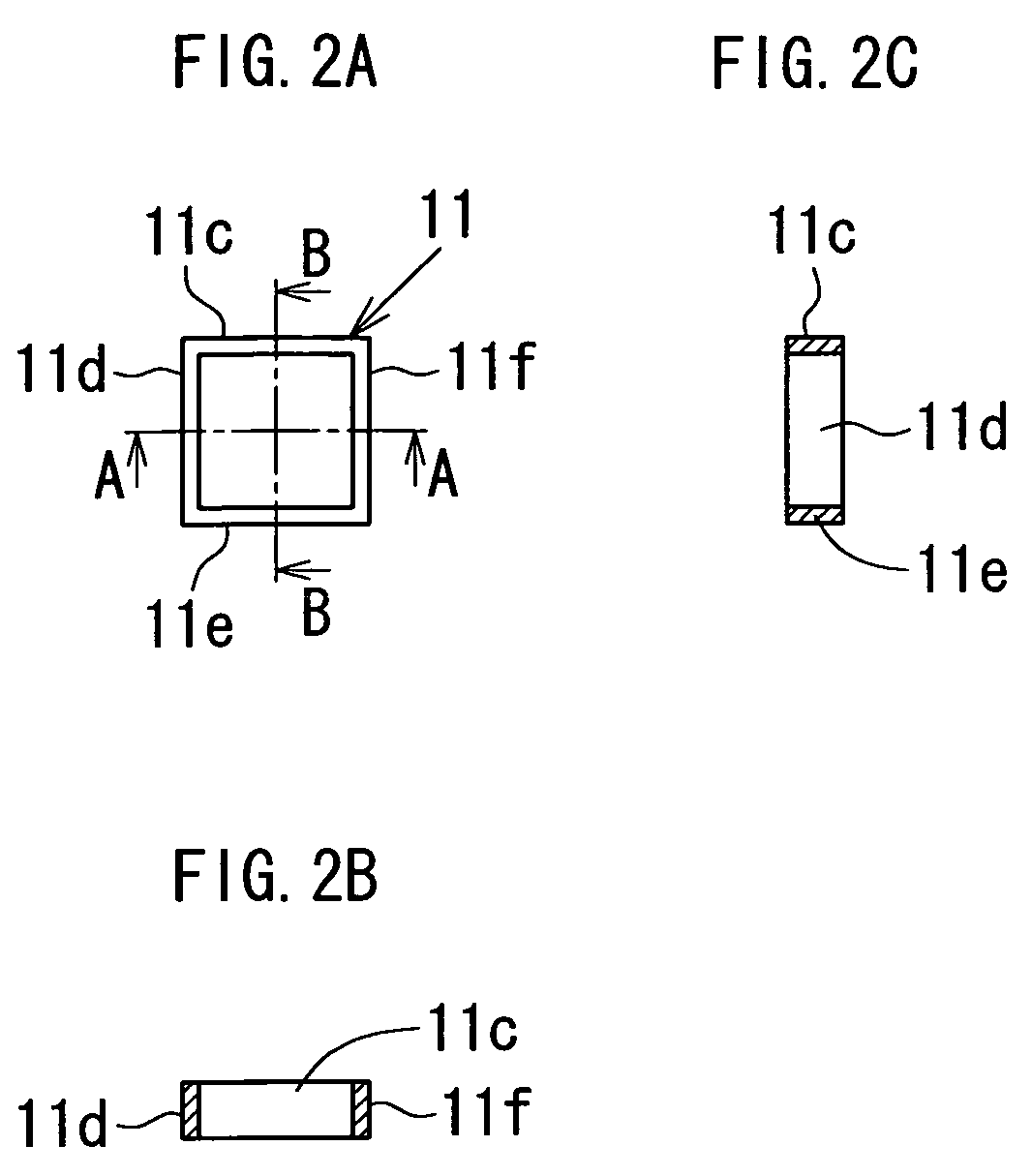Spread illuminating apparatus
a technology of illuminating apparatus and spread light, which is applied in the direction of lighting and heating apparatus, instruments, optical elements, etc., can solve the problems of reducing the luminous efficiency of point light sources, unable to provide a heat radiation system good enough to efficiently release heat generated at point light sources, and raising temperature, etc., to achieve a large section area, improve luminous efficiency, and reduce the effect of radiation
- Summary
- Abstract
- Description
- Claims
- Application Information
AI Technical Summary
Benefits of technology
Problems solved by technology
Method used
Image
Examples
first embodiment
[0029]the present invention will be described with reference to FIGS. 1A to 1C through FIGS. 3A and 3B. A spread illuminating apparatus according to the first embodiment includes a double-sided flexible printed circuit board (hereinafter, referred to as FPC) 10, which, as shown in FIGS. 1B, 3A and 3B, includes a base film (substrate) 6 made of polyimide or like substance, first and second conductive patterns 7F and 7R disposed on respective surfaces of the base film 6 and each formed of a copper foil patterned, and cover films 8F and 8R made of polyimide or the like and disposed so as to cover the first and second conductive patterns 7F and 7R, respectively.
[0030]A pair of electrode pads 16a and 16b on which an LED 3 as point light source is mounted are formed on the first conductive pattern 7F disposed at a front surface 10F of the FPC 10. Openings 14 and 14 are formed at prescribed portions (to be described) of the base film 6 of the FPC 10, and the second conductive pattern 7R di...
second embodiment
[0044]In the spread illuminating apparatus described above, heat generated at each of the LEDs 3 and emitted from side faces 3c, 3d, 3e and 3f of the LED 3 is caused to be conducted to a heat radiating plate 5, thereby improving the performance of radiating heats generated at point light sources. Since the heat radiation system from the thermal conductor enclosure 11 to the heat radiating plate 5 contains a thermal pathway formed such that the thermal conductor enclosure 11 and the second conductive pattern 7R are connected via the throughholes 21 to each other without a base film 6 of the FPC 30 intervening therebetween, the heats emitted from the LEDs 3 can be efficiently conducted to the heat radiating plate 5 thereby achieving an effective heat radiation.
[0045]An assembly structure indicated by numeral 40 in FIGS. 5A and 5B is preferably manufactured in the same way as the assembly structure indicated by numeral 20 (refer to FIGS. 3A and 3B) explained in the description of the ...
PUM
 Login to View More
Login to View More Abstract
Description
Claims
Application Information
 Login to View More
Login to View More - R&D
- Intellectual Property
- Life Sciences
- Materials
- Tech Scout
- Unparalleled Data Quality
- Higher Quality Content
- 60% Fewer Hallucinations
Browse by: Latest US Patents, China's latest patents, Technical Efficacy Thesaurus, Application Domain, Technology Topic, Popular Technical Reports.
© 2025 PatSnap. All rights reserved.Legal|Privacy policy|Modern Slavery Act Transparency Statement|Sitemap|About US| Contact US: help@patsnap.com



